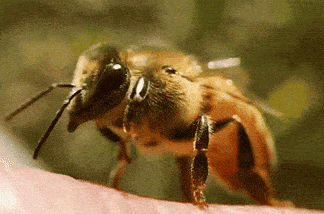- The Daily Tonic
- Posts
- How a bee sting may cure cancer.
How a bee sting may cure cancer.
Plus: Recipes to get you through to the weekend.
“Do not wait for leaders; do it alone, person to person.” - Mother Teresa
Thursday. Can someone please explain to me why short weeks always feel the longest? It’s like you get Monday off, and then time… just… stops… moving. In other news, two construction workers in China damaged a portion of the Great Wall after plowing a hole through it with an excavator as a shortcut for their construction project. Yikes. And finally, in other other news, bee stings might be able to cure cancer. Let’s dive in.
Together with Inside Hotels
Hotels We Love: the goodtime hotel
As the name might suggest, this hotel is all about the good times.
Situated on the ever-sunny Miami Beach, this venture from renowned entrepreneur David Grutman and musician/creative director Pharrell Williams is on-trend and off-the-clock, offering guests thoughtfully-furnished rooms and plenty to do. As the hotel is outside of South Beach, you won’t be disturbed by revelers at all hours of the night, but its proximity to that area means you can still let loose when you want to. A number of places to eat and drink, as well as an indoor/outdoor fitness center and a truly gorgeous pool, will have you returning time and time again.

Bee Stings And Breast Cancer
In the U.S., around 264,000 women are diagnosed with breast cancer each year. That staggering number accounts for 30% of all new cancer cases among women. Over the last three decades, we have fortunately seen a slow reduction in deaths from breast cancer thanks to better screening and more effective treatments. But we can still do better.
How well someone does after a breast cancer diagnosis greatly depends on how advanced the disease is when found and the nature of the tumor. Breast cancer is classified by its receptors: estrogen, progesterone, and human epidermal growth factor receptor 2 (HER2). The best chances of survival are with tumors that are positive for hormone receptors but negative for HER2.
Tumors with lots of HER2 receptors are trickier because they can resist treatment. The most challenging type is called triple-negative breast cancer (TNBC) because it doesn’t have any of the three types of receptors. This makes it hard to target the cancer cells with treatments, making the prognosis significantly worse for those patients.
But there might just be a new glimmer of hope for how we can tackle these types of treatment-resistant cancers in the future — a bee sting.
When a honeybee stings, it hurts because of something called melittin. This is a peptide, which is a short chain of amino acids, and this particular peptide makes up most of a bee’s venom. Melittin can harm nearby cells by creating holes in their outer layers. But this destructive ability is precisely why scientists are eyeing melittin as a possible weapon against cancer.
Researchers have found that bee venom and melittin are both good at killing TNBC and HER2-enriched cell types. In fact, these substances were even better at targeting cancer cells than they were at targeting normal cells. This targeting seems to be because melittin can stick to cancer cell outer layers better than with a normal, healthy cell.
Melittin’s ability to stick to cancer cells and attack them looks promising. But there’s still a big problem. Melittin can still harm regular cells that aren’t cancerous. That’s always the trick with cancer treatments: they need to hurt the cancer without doing too much damage to healthy cells. The good news is that scientists are making progress toward finding ways to change melittin slightly, making it more selective in targeting cancer cells.
A study looked at how bee venom and melittin affected different cell types. They found that the amount needed to kill half the cancer cells was much less than the amount required to kill half the normal cells. This gives hope that melittin might be a useful tool in the fight against cancer.
When combined with other drugs in mouse studies, melittin seemed to make those drugs work even better. This is probably because melittin makes holes in cancer cells, letting other drugs get inside more easily. It’s a promising approach that might give patients a better chance of beating cancer.
And the kicker? Melittin may soon play a role in treating more than just breast cancer. Other cancer types also have lots of EGFR and HER2. Since these molecules are often linked to treatment resistance and poor outcomes, melittin could be a helpful tool in many cases.
The key takeaway? There’s still tons of work to be done. Right now, melittin needs something to help carry it into the body safely. If put directly into the bloodstream, it can destroy red blood cells, which obviously isn’t good. Some experiments with mice have used tiny particles to safely deliver melittin to cancer cells, but again, these studies are still in their infancy.
More big picture, melittin is another example showing us that nature might have solutions for some of our biggest health challenges. If scientists can figure out how to use natural substances like melittin safely, we might just end up with a new powerful tool to fight cancer.
Tonic Shots
1. Short On Time?

Sometimes you just don’t have time to prepare a proper breakfast in the morning. This is where some overnight oats the night before can be a huge help! Add some protein powder for an extra boost and you are all set!
2. Hummus, But Better

The only thing better than hummus is homemade hummus. Enjoy!
3. Did Someone Say Gluten Free Muffins?

Yes — there is a way to enjoy something like a muffin every now and then and still follow a mostly healthy and sustainable diet. Enjoy this recipe!
Keep Reading
Love The Daily Tonic? Here’s another newsletter you may love too:
|
How was today's newsletter? |


